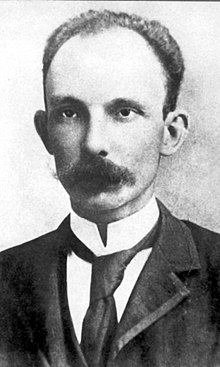Patria (newspaper)
Writer José Martí played a leading role in founding the paper as the official publication of the Cuban Revolutionary Party.
Because of his military leadership, Gómez was believed to provide a well-rounded perspective to the movement and to know how to portray a steady government instead of a colonial era situation.
The reason for Patria being referred to as exile press was because its printing or place of creation was not in Cuba but rather in the United States where freedom of speech is allowed.
Se verá la fuerza entera del país en sus páginas.”[3] Martí reiterated the goals of Patria throughout the various issues that were published in order to encourage its readers to take action on the topics that were being presented.
[3] In a section of the issue released on May 7, 1892 entitled “ Época de corazones”, the newspapers' editors announced that they would be sharing the opinions of those individuals who had expressed their thoughts to the editorial team through letters.
As Laura Lomas writes in Translating Empire, " The columns of Patria provided the vehicle through which a vision of an alternative modernity developed in the tobacco workshops and Latino/a migrant communities that made the revolution possible by funding it and by sending people to fight in it.
In the space between these columns and pages, the fold along the center invites reflection, notes, conversation, and debate among the working masses that funded and fought for this revolution.

